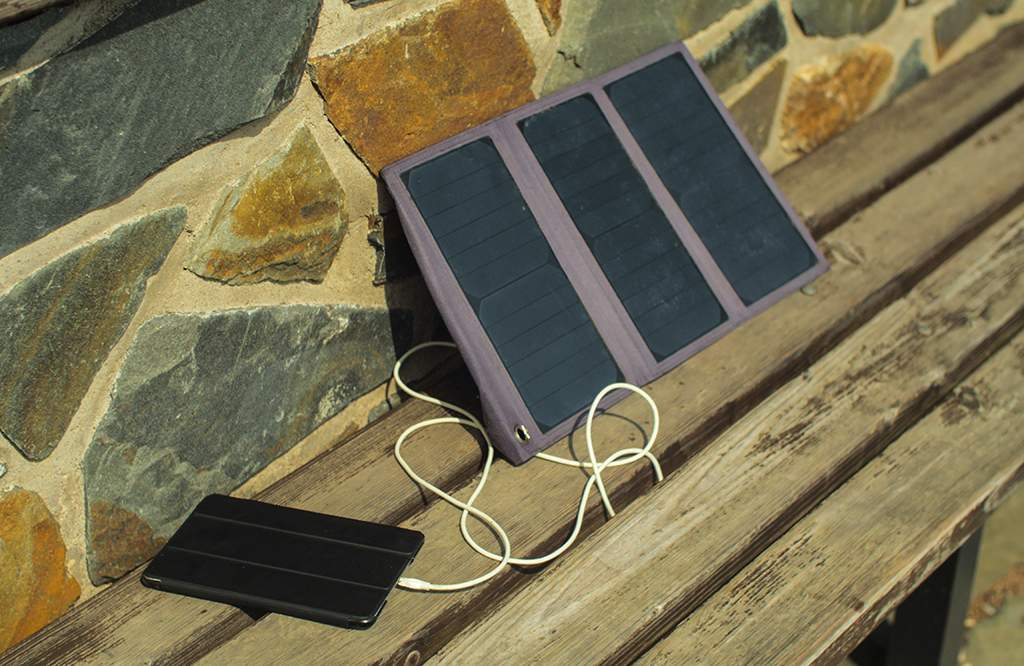
Sustainable IT products – What are they? How can they contribute to sustainability?
Sustainable development poses the biggest challenge of present times.
Surviving and growing in a sustainable way has become a huge problem. It combines several global challenges, including pollution and intoxication of the environment, hunger and malnutrition, climate change, depletion of mineral and organic resources, ecological devastation, and global inequality.
Every day, we are exposed to environmental dangers such as resource depletion, pollutants, deforestation, e-waste production, substandard air and water quality, ozone layer depletion, etc.
CO2 emissions are growing tremendously and are expected to exceed 4,807 million metric tons by 2050 if appropriate measures are not taken. That should be enough to worry everyone, even entrepreneurs and major industry leaders.
We require a prompt remedy. The adoption of sustainable technology is one approach that corporations and individuals have started to address climate change.
Technology has served a significant role in creating the challenges we confront, but they play a key role in their resolution. The reason for this is not because sustainable development is a technological objective. Instead, sustainable development is the goal of the entire community. However, technology is profoundly embedded in our culture; without it, society would implode. Furthermore, technical changes may be regarded as being easier to implement than lifestyle adjustments that may be required to solve the challenges we experience.
As we all know, sustainable development is defined as growth or development that meets the requirements of today without jeopardizing future generations’ capacity to satisfy their own wants and needs.
But,
What is Sustainable Technology?
Sustainable technology or green technology is an overarching term for innovation and invention that considers natural resources and promotes economic and social progress. These innovations aim to massively reduce environmental and ecological concerns while also creating a long-lasting product.
In simple terms, sustainable technology implies reducing our social and environmental impact at every step of the product’s life cycle, from raw – materials collection to end-of-life disposal.
Our responsibility starts with materials that are acquired. These should be sourced in accordance with the most recent environmental and ethical standards. Then, by using an eco-design strategy, a meticulous analysis of the impact of future goods on our globe’s resources should be done. With a robust supply chain, the effect of our manufacturing activities on resources and the local community can be minimized.
Sustainability in technology can be described in a few ways:
Substitution: In its manufacture, the technology promotes a transition from non-biodegradable to biodegradable materials. It also substitutes renewable resources for non-renewable resources.
Prevention: The use or manufacturing of sustainable technology avoids deterioration, contaminants, and other harmful ecological repercussions.
Efficiency: Regarding energy and resource utilization, the technology is effective and efficient.
Thereby, Sustainable Technology aims at creating new technologies that benefit our world, businesses, and people’s lives. Also, reducing the amount of waste generated when discarding the products makes recycling easier for all.
Examples of Sustainable Technology
The era of green technology is now on the upswing, competing with an increase in inventive transformation. However, combining the two has rarely been an alternative in the past. And only in recent times has there been a surge in attempts to merge technology and sustainability.

Technology sustainability has indeed found its way into mainstream use and innovation. Common examples of sustainable innovations and advancements include:
- Public transportation and electric vehicles or green vehicles
- The LED lighting technology
- Harnessing Solar energy
- Channelizing Ocean Energy
- Technologies for carbon capture and storage
- Buildings and construction technologies that are self-sufficient and LEED-certified
- Water Purification Technology
- Recycling and Waste Management Technologies
- Vertical Garden and Farms for Food Production Problems
Note: These are just a few of the advancements; many more are happening.
Why is Sustainable Technology Good For Business?
Sustainable technology can revolutionize the way businesses and government institutions operate. Sustainable technology strives to reduce any substantial negative repercussions, which is beneficial to a company’s bottom line and reputation.
Every entrepreneur wishes to make a difference while adhering to environmental and social norms. Companies can remain afloat while also helping the environment by introducing innovative and sustainable solutions.
We’ll drill down into,
Why Your Business Should Invest In Green Technologies?
1. Lowers Risk and Improves Project Results
One perk of sustainable technology would be that it assists your company in reducing risk. When you choose renewable and biodegradable products, you indirectly safeguard the environment and your business from the detrimental impact of climate change.
Sustainability is used by almost 50% of companies to increase productivity and creativity. With sustainable technology at your disposal, your company will become more appealing to investors. Furthermore, long-term investors are more likely to collaborate with companies with high ESG rankings.
2. Increase Your Profitability
With sustainable technology, your business can make good utilization of resources. This has a significant impact on your bottom line. Spending less and obtaining more is a revenue booster that can allow your business to stay competitive.
3. Recruit and Keep Top Talent
The silent war of attracting and maintaining outstanding candidates continues in the corporate world. The secret to attracting top personnel is to invest in long-term technologies for your company.
Four out of every five millennials prefer working for companies that adhere to environmental and social principles. Employee loyalty is also more likely when your company is geared to long-term sustainability.
4. Lowers Operational Costs
“Adopting green” your organization requires an initial investment, but you will save money in the long run by prioritizing sustainability.
Going green can help you save money in your business. Saving money can be achieved by, for example, utilizing more efficient lighting or creatively repurposing existing resources. Although it requires an initial expenditure, switching to solar energy pays off in the long run.
Going green can even earn you tax breaks, rebates, and discounts from the government. Finally, the more sustainable your company is, the less money you’ll have to invest in energy and supplies.
5. Enhances a brand’s reputation
Reputation management involves developing a positive image by harmonizing with positive activities in businesses.
People consider sustainability to be a plus, and businesses with green principles are eager to highlight them as a result. Going green demonstrates to the world that you care about more than just stacking cash and profit. You can take advantage of this when promoting your business and establishing your brand image.
Sustainable Products- Examples
Sustainability is no more a buzzword but has become a necessity of life. Several practices have led to reducing our reliance on certain energies, limiting emissions, and modifying the way we shop or commute.
Here are a few common Sustainable products that can be adopted in daily life;
Solar Powered Speakers
Solar panels have not only been used to power electronics; they have also been designed to assist technologies in becoming completely self-sufficient. This creativity can be seen in the Etón Rukus wireless speakers, a sleek, modern audio system that packs a powerful auditory punch and is powered entirely by the sun. The solar panels are, as anticipated, seamlessly placed on the device’s top to allow for optimum light absorption. It’s certainly cutting-edge, and it also looks nice.
Energy Efficient TV
For some time now, television manufacturers have been making a deliberate effort to make energy-efficient televisions. The great majority of a retailer’s television inventory is typically ENERGY STAR-certified, indicating their dedication to energy efficiency and the environment. Recently launched models continue to need less and less power to perform properly, benefiting both the environment and your pocket.
Solar Phone Charger
You can say goodbye to those desperate rushes for an electrical outlet while conserving energy with a solar charger. Simply place your charger in the sun, and you’re good to go.

Eco-Friendly Dishwasher
An eco-friendly dishwasher’s energy and water consumption are half that of a standard dishwasher. This environmentally friendly product improves the environment and helps users save a lot of money.
Electric Cars
In an era when the transportation industry failed to significantly reduce its carbon footprint, businesses such as Tesla and Nissan emerged as the poster children of the electric car revolution. Unlike traditional vehicles, electric vehicles (EVs) are powered by extremely efficient electric motors that use clean energy.
Eco-Friendly Laptops
Laptops and other regular electronics have become a necessary evil, and having a sustainable or eco-friendly is indeed a good idea. These days companies like Lenovo, Dell have come up with eco-friendly laptops. These laptops are extremely energy-efficient, largely toxin-free, and it is easy to recycle, making them an eco-friendly option. Moreover, these are TCO-Certified which means that the laptop has a lower environmental and social effect in its entire lifespan, from manufacturing to disposal.
The technological advancements, products, and examples listed above are only the tip of the iceberg. Many businesses realize that change is necessary and must occur quickly. Since going green isn’t only about saving the planet but has far more benefits!
References/ Sources
- https://www.researchgate.net/publication/230873698_What_is_Sustainable_Technology_Perceptions_Paradoxes_and_Possibilities
- https://www.rubicon.com/sustainability-hub
- greengeeks.com
- https://online.maryville.edu: Going Green: Benefits of Sustainability in Business
- https://walterschindler.com/7-green-technology-examples/





